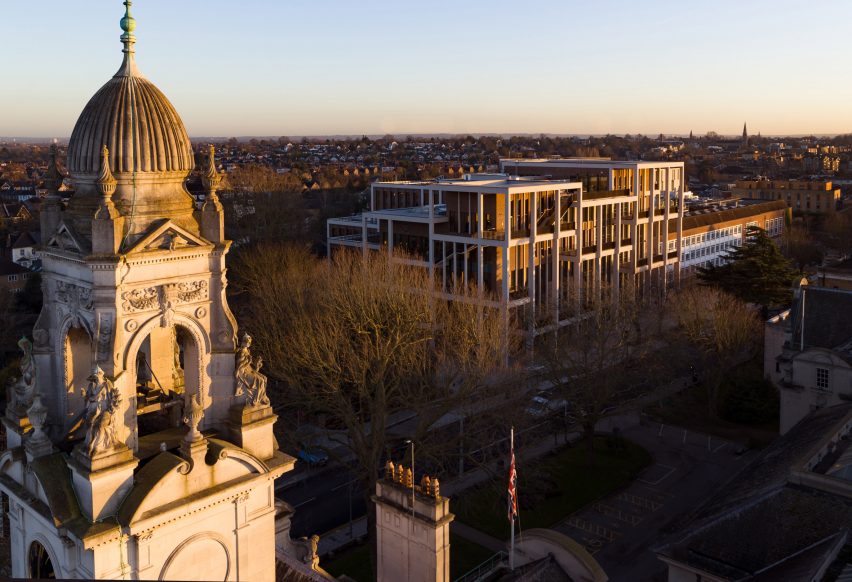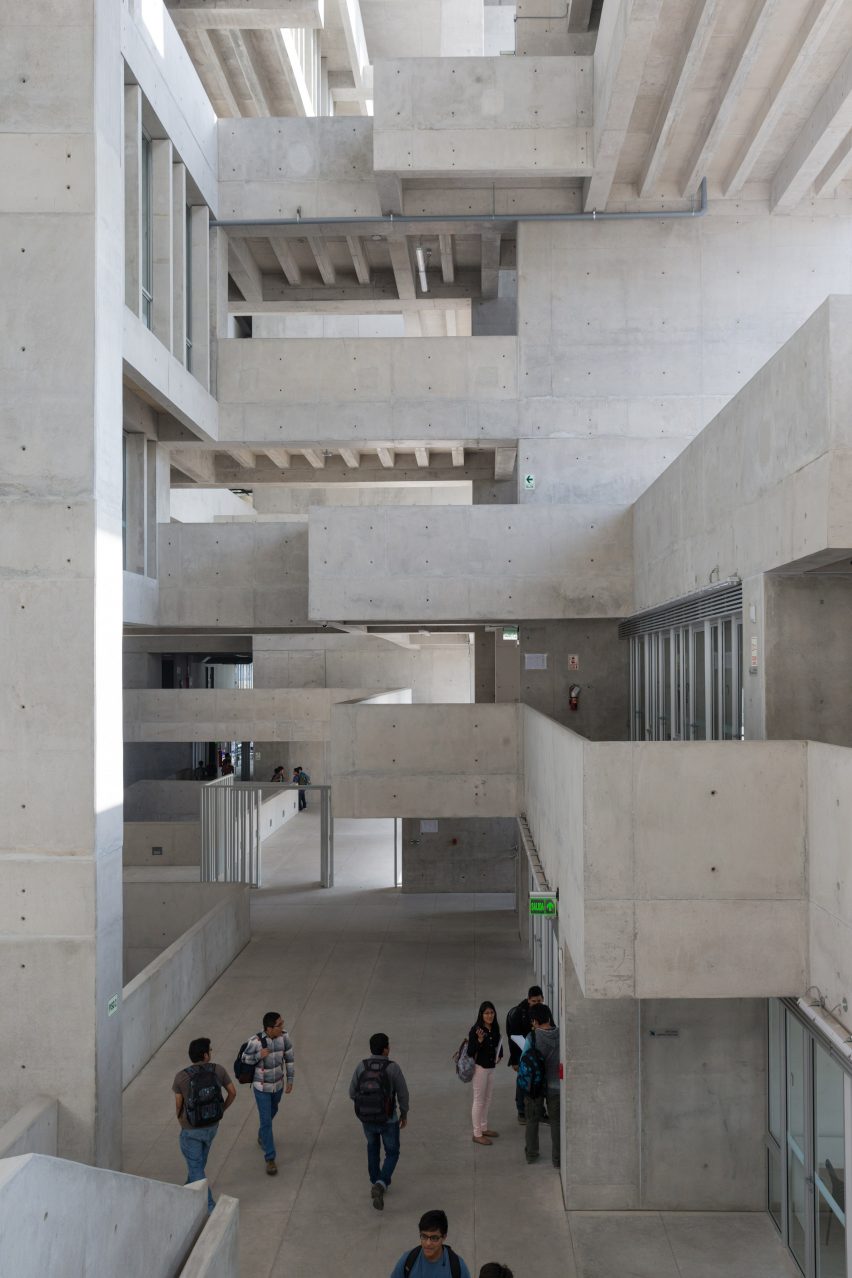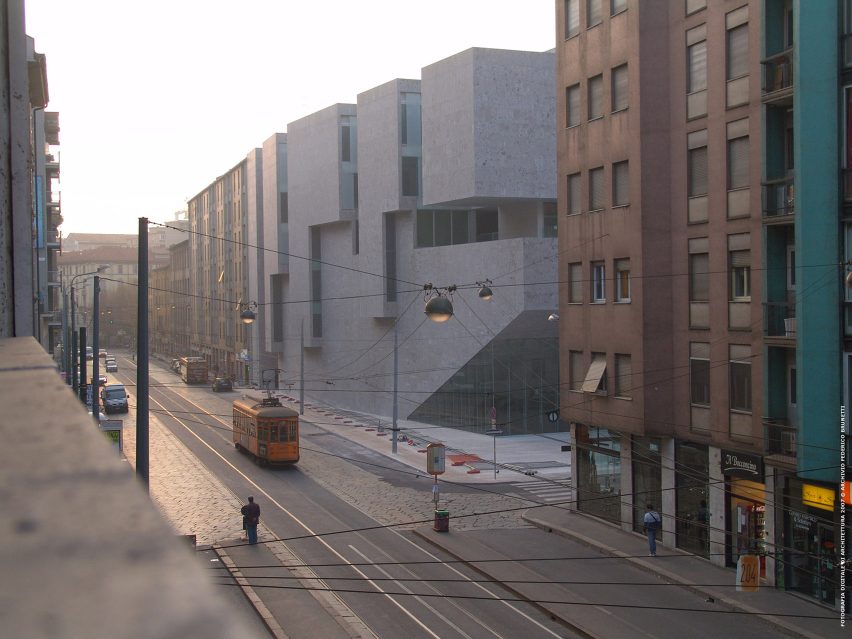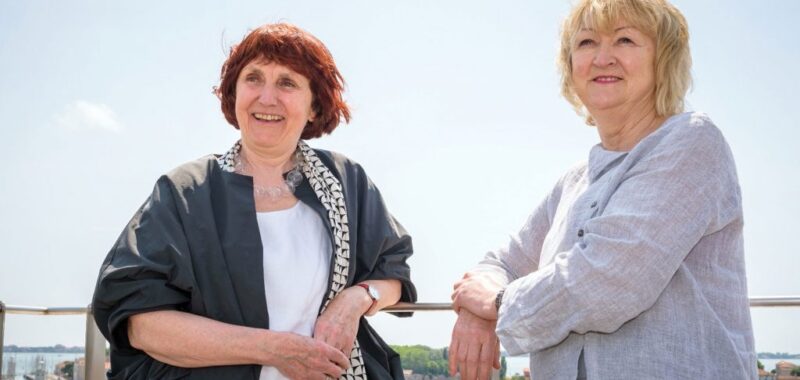Grafton Architects is one of the world’s most decorated architecture studios. In this interview, founders Yvonne Farrell and Shelley McNamara explain how they stay motivated after 46 years in practice.
Among the Irish studio’s long list of prestigious accolades are the RIBA Royal Gold Medal, the Stirling Prize and the Pritzker Architecture Prize.
But the awards did not arrive overnight. Farrell and McNamara established Grafton Architects in Dublin in 1978, naming the studio after the street where their first studio was located, and it would be three decades before they gained international recognition.
As much as raw design talent, the pair attribute their extraordinary awards successes to this dogged commitment to the profession.
“The business of architecture is a long investment,” Farrell told Dezeen. “We’ve been through at least three major recessions and the survival of a business in architecture is no mean feat.”
“We see the achievements as being endorsements of commitment,” she said.
“The highlights have really been chances or luck”
McNamara added that she believes a certain level of luck was also involved.
Some of Grafton’s most feted projects have been university buildings – most notably Town House for Kingston University in London, which won the Stirling Prize in 2021 and the Mies van der Rohe Award in 2022.
Before that, the studio earned its first international acclaim for the Universita Luigi Bocconi School of Economics campus in Milan, which was awarded the 2008 World Building of the Year Award, and later won the inaugural RIBA International Prize in 2016 for the University of Engineering and Technology (UTEC) campus in Lima.

The breakthrough Universita Luigi Bocconi project came about after a much smaller commission closer to home, when the studio won a competition to design an extension to the Department of Mechanical and Manufacturing Engineering at Trinity College in Dublin.
Completed in 2002, it was Grafton Architects’ first university building, and led the studio to get on the competition list for designing the Universita Luigi Bocconi campus.
“When we look back, the highlights have really been chances or luck,” McNamara reflected.
“Trinity College in Dublin was our first university building – it wasn’t a large building, but it was really important for us – and then we were put on the list for the Universita Luigi Bocconi when nobody knew who we were.”
“I don’t find that there’s one career highlight, but in terms of opportunity, I would say that [Universita Luigi Bocconi] and [UTEC] were shots in the dark that catapulted us to another scale,” she added.
Winning so many awards over the past 20 years has done little to change Grafton Architects’ approach to their work, McNamara claims.
“It’s wonderful to get that kind of recognition,” she said. “People would say, ‘it will change your life’, and I suppose the phone never stops ringing, but I can’t say it has changed our working lives because we still work through competition mainly – things don’t walk in the door to us.”
“We haven’t lost that sense of wonder”
Neither have the pair got used to gaining accolades, however.
“It’s an amazing honour to receive a Gold Medal or receive a prize,” added Farrell. “We haven’t lost that sense of wonder that we’ve been recommended for something.”
“In all human activity, you need times of celebration as well as the time of ploughing the field.”
Farrell and McNamara have also relied on teaching to sustain their enthusiasm for the profession.

In the early stages of establishing their practice, both architects taught at University College Dublin’s School of Architecture to support their studio work.
They continued to teach in Dublin until 2002 and have since taught at the Swiss Federal Institute of Technology Lausanne (EPFL), Harvard Graduate School of Design, Yale and Accademia di Architettura di Mendrisio, which they say provided them with both financial support and creative respite.
“We set up the teaching with the practice as a way of surviving – teaching was an intellectual support system as well as a financial support system,” said Farrell.
“We teach in a way that liberates us from practice,” added McNamara. “Especially during the recession in Ireland, it was wonderful to go to a country where there was no recession and talk about architecture for two days.”
McNamara went on to say that she has had to grapple with the arduous nature of the architecture profession from the beginning of her career.
Because of this, she aims to find an “emotional component” in each project that she can connect to even after 46 years in practice.
“Very early on, I found that making buildings was so stressful, so painful and so terrifying in many ways, that there had to be a way of making something that had an emotional quality,” said McNamara.
“I felt that we really had to get as much as we possibly can into the project to go beyond just the construction – what was the sensual or emotional component that you might feel beyond the construction that could be the thing that would make it worth the pain?”
At Grafton Architects, this feeling translates to a company ethos of creating spaces that inspire optimism.

McNamara explained that at the studio, they continuously reflect on what they’ve learned from designing and completing past projects rather than becoming devoted to a distinct style of architecture.
“Each time we do a project, we start again,” she said. “We’re rethinking the nature of architecture all the time.”
“Our goal is to make the most optimistic and inventive environments for people to occupy in this current world, which is so full of negatives and pressures.”
“Architecture by its nature is optimistic because you can’t imagine a space for the future if you’re not optimistic,” McNamara continued.
Farrell agrees with this sentiment, adding that she finds motivation in designing spaces for everyday life.
“I gain more respect for the discipline of architecture the longer I’m involved, and I realise how it’s really about making the space in which lives happen,” she said.
“People don’t realise how impactful every architectural decision is on everyone’s lives, and that’s something that’s been part of our whole architectural career.”
Dezeen In Depth
If you enjoy reading Dezeen’s interviews, opinions and features, subscribe to Dezeen In Depth. Sent on the last Friday of each month, this newsletter provides a single place to read about the design and architecture stories behind the headlines.

